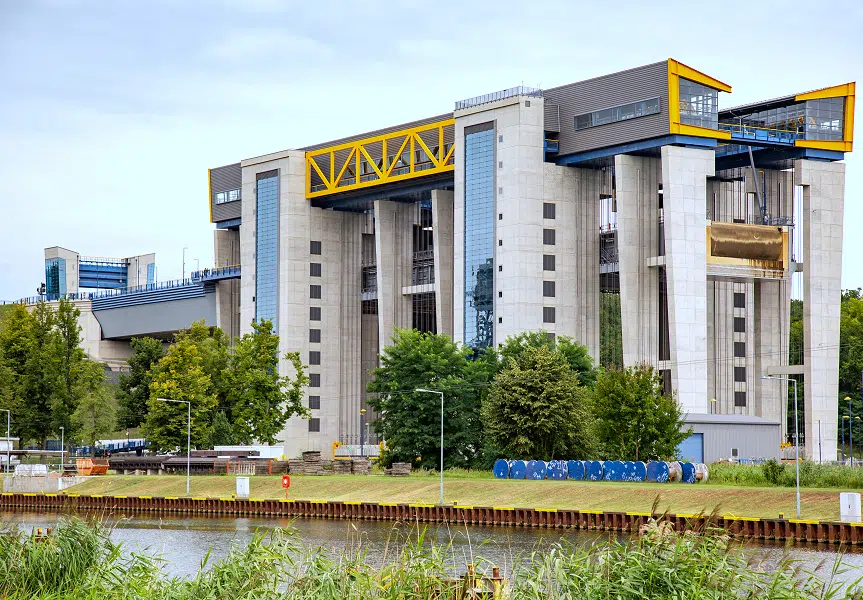Transport and infrastructure
Both the project coordination of many participating companies and years of project execution times
are a challenge when it comes to meeting completion deadlines.
However, timely virtual commissioning (VC) allows the final step,
the commissioning of automation technology can be guaranteed in terms of time and quality.
Seemingly simple technological installations such as traffic signal control systems, fire protection coordination or safety technology in road tunnels, as well as lock gates, rope stop systems and weir controls at ship lock facilities mean that construction companies are rarely able to rely on standard software solutions or experienced programmers due to the relatively low number of installations, sometimes considerable project delays and the necessary tendering and award procedures.
Since WinMOD was first used in 1998 to test lock control software, demonstrating clear advantages for safe plant commissioning, VC with WinMOD has become the standard project management tool throughout Germany for hydraulic structures such as locks, weirs and ship lifts.
An outstanding example of this is the Niederfinow ship lift, which will go into operation in 2024. WinMOD was used to perform a step-by-step VC of all individual plant components, right up to the entire plant, including the process control technology.
Following initial very positive experiences with automation projects in road construction (tunnels, traffic control technology), VC has also established itself as the standard procedure here with WinMOD.

Further process automation solutions
Typical processes that carry out continuous or batch conversion of substances.
They are divided into main and auxiliary processes.
The aim is the economical and safe fabrication of basic materials or specialised products for all industrial sectors.
Similar production processes are used as in the chemical/pharmaceutical industry, but the core here is the use of microorganisms, cell cultures or enzymes for the fabrication of products.
In future, it will be used in various areas such as pharmaceuticals, green energy and green chemistry.
The focus is on processing, preserving and refining agricultural and raw materials. Typical processes include material- and energy-oriented product manufacturing, often combined with strict quality and hygiene standards.
All processes involved in the extraction and processing of raw materials (coal, ores, salts, earths) and their conversion into basic industrial products (steel, cement, gypsum, various other building materials). These processes are usually very energy-intensive.
Refrigeration machines for cooling and system components for cooling distribution and utilisation are a key factor in both industrial plants and building automation.
Energy generation plants based on fossil fuels (coal, gas, oil), nuclear power plants and increasingly promising variants based on environmentally friendly resources such as hydropower, solar, wind, tidal, etc., as well as energy distribution plants, are becoming increasingly highly automated with extreme demands on their availability.
Water supply, from extraction, treatment, storage and distribution, as well as wastewater disposal, including transport, storage and treatment for environmentally sound disposal, are fundamentally important for a modern society and its industry.
Technical installations in road transport (general traffic control, tunnels, bridges), rail transport (signalling and switch systems, signal boxes, etc.) and waterway transport (locks, weirs, ship lifts)
All areas of technical building equipment such as ventilation, heating, air conditioning, security and fire protection that aim to improve energy efficiency, comfort, safety and cost-effectiveness in buildings.
General shipbuilding for civil, technical and military use, offshore installations as bases for wind farms, gas and oil production facilities, and underwater stations.